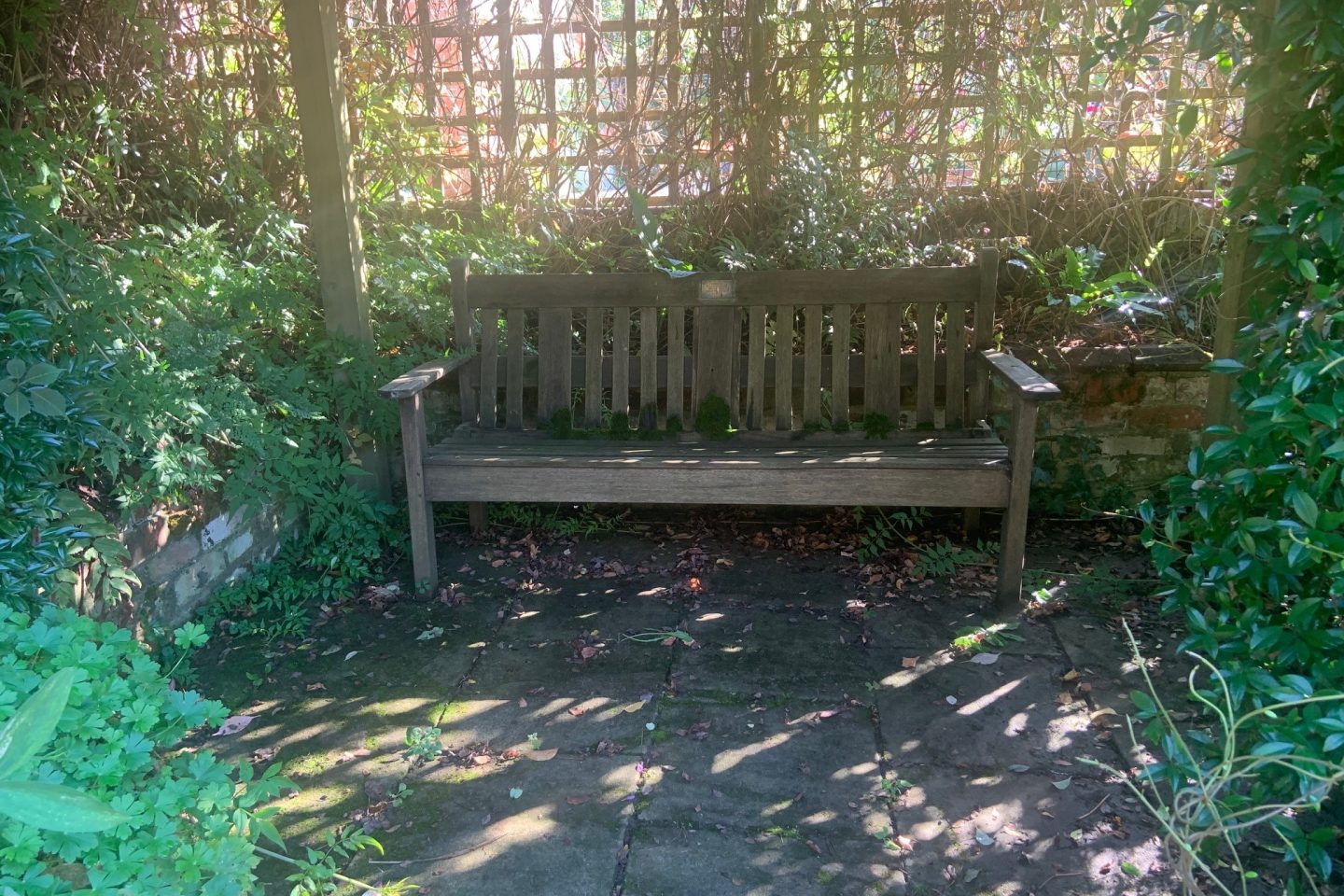Top tip
It’s important to remember that gardens and disabilities and conditions change over time, so be mindful that you might need to change things at a later date.

To get the most from your garden when you use a wheelchair, you may need to make some adaptations. These can improve safety and comfort. Here are some top tips and areas to think about to create an accessible garden.
There are important pieces of legislation and design principles you may want to know about. These are outlined in brief below.
Building Regulations
There is some limited information on accessible garden design in Approved Document M of Building Regulations (access to and use of buildings). If you are working with a builder or garden designer you may want to discuss with them.
Equality Act 2010
The Equality Act 2010 (Amendment) Regulations 2023 legally protects people against discrimination in a number of areas. This includes when buying or renting property.
Universal Design Principles
Using Universal Design principles means designing products and environments that are usable as much as possible to all people without needing adaptation or specialized design.
The 7 principles and guidelines are well explained on the University of Berkeley website.
There is also a helpful PDF on the principles of inclusive design from The Design Council in the UK.
It’s important to remember that gardens and disabilities and conditions change over time, so be mindful that you might need to change things at a later date.

A reasonable space each side is needed when travelling in a manual wheelchair. At least 5cm and preferably 10cm on both sides is recommended.
Entry points (e.g. doors and gates) need a clear, accessible opening at least 1m wide.
The impact force (i.e. how forcefully it swings back into place) of any gate should not exceed 30 Newtons (N).
Gates should be clearly visible between 50cm and 1.5m above ground level.
Handles, latches or other ironmongery should be between 75cm and 1m above ground level. They should either use a lever action or be able to be operated using a single, closed fist. They should not be cold to the touch.
Suitable paths
Pathways provide essential access between the house and other areas of the garden. They need to be wide enough and have an appropriate surface. Any hazards should be removed.
Ensure all paths are safe and stable, with a firm sub-base. Paths should be flat and even, with a non-slip, non-reflective surface, such as resin-bound or bonded aggregate, self-binding gravel or paving.
Paving used for patios and pathways should have a minimum resistance value (R value) of R12 or R13.
Material used must have a very low risk of slipping. A way of calculating this is through its Pendulum Test Value (PTV). This is even more important on slopes. A score of 51-70 and 70+ PTV, respectively, under BS EN 13036-4:2011 Pendulum Test is required. Paving with a higher resistance value (i.e. R13) is best on slopes, giving a higher PTV score of 61 or above.
The difference in level between each paving slab should be no more than 5mm. Paving joints should be flush, or no wider than 10mm and no deeper than 5mm.
Paths should be at least 1.2 m wide, with a turning circle of 2.4m.
Some scooters and wheelchairs need more room to turn than others. A path width of 2.2m and turning circle of 2.8m should be enough for anyone to turn 180 degrees.
To turn 90 degrees, a manual wheelchair user needs at least 1.2m x 1.2m. To turn 180 or 360 degrees, 2m x 2m is needed.
Join our free Gardening Club community to enjoy seasonal tips, inspiration and entertainment.
Find out more
Manage changes in level in the garden with ramps.
Part M of Building Regulations suggests ramps for slopes have a minimum gradient of 1:12. This can be too steep for many users. If a wheelchair user has a weighty backpack, this slope could cause the chair to topple backwards.
Ramps for slopes exceeding 1:20 need flat landings for every 750mm of vertical climb.
You may want to include a sturdy handrail with ramps. This is not always necessary but can help if you find it easier to pull yourself along with it. If you have a handrail, it should start at least a metre before the ramp begins.
Handrails can be metal, wood, a mixture of both, plastic or rope. Remember, wooden handrails are warmer to the touch. Metal ones can be very cold, especially in winter. If using rope, check it has been soaked and dried before installation. This stops the rope from shrinking.
Never place a gate or door immediately at the top or bottom of a ramp. It is too difficult to keep yourself on an incline in a wheelchair and open a door or gate (especially if the door or gate swings inward).
Lawns
If you want to make your lawn easier to manage, you could reduce the size of it, or remove it completely. You could replace sections with paving with easy to reach containers.
A lawn presents very different challenges depending on the season. In the autumn and winter, lawns can be very difficult to go over. During a hot summer however, when the cut lawn has baked the surface can be as hard as concrete.
If you do have a lawn area, opt for clean straight edges instead of curved borders to make cutting grass easier.
It is worth having a layer of paving, cobbles or bricks between the lawn edge and the border. This will help when cutting grass as it stops grass growing sideways into the border. Mowers can go straight over it, leaving a clean cut edge.
A stabilisation grid with grass growing up between it can make a lawn easier, although it is quite costly. But, if you love a lawn it’s a worthwhile investment. This ensures a firmer ground for wheels and makes cutting simpler. It is always best to lay with substrate and grass seed rather than attempting to lay turf on top. As the grass grows it will knit together in and around the stabilisation grid mesh.
Never leave the lawn long as this will make it hard to move over.
I always ask people to please not install artificial grass – this has no benefit to wildlife whatsoever!
Mark Lange, garden designer and Thrive ambassador
Gravel areas
You may like the idea of gravel in place of, or alongside lawn areas. Stabilisation grids infilled with gravel can help, but in time you will see the grid pattern. If you are happy with how this looks, then they are great. They can be expensive, though.
Make sure grids have weed-suppressing matting attached to the bottom side. This helps stop weeds and other plants coming up in between the grids.
Gravel paths can work if you have large wheels. If you do use gravel, opt for a small angular gravel, which helps the individual stones to interlock. Always ensure there is a firm sub base using type 1 MOT.
Never use deep gravel or pea shingle as wheels just spin in it.

An outdoor table is helpful if you like to sow seeds outside. A recess in the table will make it easier to reach things. You could put slip-resistant matting on the table to prevent items from rolling off.
Some people prefer gardening in raised beds, compared to at ground level. Because you can choose the height of your raised bed, it can make gardening more comfortable to do. A straight-sided raised bed can be difficult to work at, as you need to lean forward and twist slightly.
An alternative is an elevated planter or growing table. This is basically just a raised bed on legs. Some allow you to bring your chair up against or even under the table. This means less leaning or twisting when working.
If you love beds and borders, don’t feel you have to stop gardening in them. There are plenty of lightweight, long-handled and adapted tools available. These allow you to comfortably reach the ground. You may decide to have a mix of raised areas and ground level. Raising beds by just 10cm will improve access to them.
Alternatively, consider growing everything in pots and containers. You can add different height ones and varied colours to make your space personal. You can grow anything in a pot or container. You might need to water them more often, although an irrigation system on a timer on an outside tap will do the work for you.
Greenhouses
Look for a greenhouse with a low threshold (i.e. easier access without a raised lip at the bottom of the entrance). Aluminium greenhouses tend to have lower thresholds.

Plan sunny and shady areas of the garden. Shade is a must to enjoy the garden on a very hot day.
When planning garden furniture, you can find a range of options for accessible garden furniture. This includes tables and picnic benches with access points at the head or in the middle of the table.
Think of your outdoor space as a multifunctional space. Perhaps you like to entertain but also need to use the space for sitting in or doing some exercise (other than gardening). Select lightweight, folding tables and chairs that can be moved to one side if you need to open up an area. Adding hooks to walls and fences for such tables and chairs frees up even more floor space.
Advice last reviewed: May 2025
